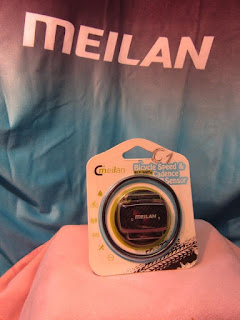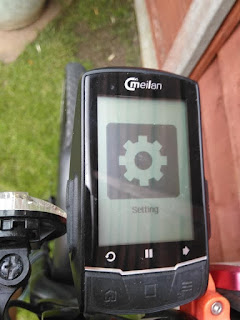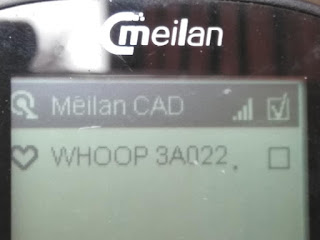Meilan C1 Cadence and Speed Sensor.
Thanks to Meilan for this chance to test out and review there C1 Bicycle Speed and Cadence Sensor.
 |
| The C1. |
 |
| Meilan. |
 |
| Instructions. |
 |
| The C1 comes with a battery and two rubber rings for fitting. |
 |
| On the reverse of the C1 there is a rubber strip that will protect your pedals or rear wheel. |
 |
| Battery cover, remove the rubber strip to,reveal the battery cover. |
 |
| Battery protection strip will need to be removed and the cover replaced. |
 |
| Refit the rubber strip. |
Fitting.
For this review I will be using the Cadence feature of the C1.
The cadence sensor fastens to any crank arm size to track pedal strokes per minute.
The speed sensor attaches to your wheel hub and self-calibrates to provide you with accurate speed and distance.
 |
| Position the C1 on your left leg pedal just off centre. |
 |
| Attach the rubber ring and hook it on the tabs of the C1 |
 |
| Having the C1 on the inside of the crank will keep it from getting knocked off when you are peddling. |
 |
| Nice and tight, neat looking as well. |
 |
| Scroll through the menus until you find the Connections |
 |
| Open the Connect tab. |
 |
Look for Add Device and scroll down when you see the Meilan CAD click Add.
|
 |
| Note the Tick in the box for the Cad. |
 |
| All set up, now fit to your pedal. |
Cycling Cadence refers to the speed with which you turn your pedals. As with an engine, your cycling cadence is usually defined by revolutions per minute or RPM. One RPM would be how many times one leg or the other makes a complete revolution. Determining your RPM is fairly simple. You pedal, you count how many revolutions you make in one minute and you arrive at your RPM. No big deal.
Or is it..
Meilan C1 RPM Speed and Cadence Cycle Sensors can be effortlessly mounted to your bike in seconds, before pairing up to your device of choice. These Lightweight sensors will provide accurate, real-time data to help you improve your ride.
It becomes a big deal when you ride your road bike for 300 minutes instead of one. The longer and further one rides, the more one is concerned about power, endurance and exertion. How much exertion does it require to obtain maximum power, and how long can you maintain that level?
The amount on the web about Cadence is mind blowing, and far too complicated to try to add here on this review blog, after all I’m just a ordinary type of rider, certainly no Mark Cavendish! you need to establish what your ideal cadence is for various conditions, and you need to understand how this will affect your riding performance. A good bench mark for an endurance cyclist is 95 rpm apparently.
Low cadence cycling can help increase endurance and the ability to handle tough climbs and accelerations. If you struggle on climbs like I do and suffer from sore muscles after difficult rides, low cadence cycling can help support your training. Adding low RPMs allows your body to perform at a more intense level, stressing power over speed. By incorporating short periods of low-RPM intervals, you will become more efficient during uphill climbs. This I must try to get to grips with, as my Slopes are not the fastest and find I mostly struggle, I will try to work on this now I have a Cadence C1 on the cycle computer.
I will be updating with more photos and info, in the mean time take a look at the Meilan range.
Please Feel Free to Support Our Sponsors Adverts.
Thank You.
Foot Note This is not a Paid Advertisement for Meilan.
Harlow cycle page on Facebook:
https://www.facebook.com/Harlow-Cycle-Page-805601672891539/
YouTube: https://www.youtube.com/channel/UCBlXmH7f4X0Az_xr7Az0Yqg
Instgram: https://www.instagram.com/harlowcycle/
Tumbler : http://harlowcycle.tumblr.com/
Twitter Feed: @TDF79
Linkedin: https://www.linkedin.com/in/harlow-cycling-b785a1105/
Pinterest: https://www.pinterest.co.uk/Harlowcycle/pins/
Email: HarlowCyclingPageGroup@Hotmail.com
....................................................................................................................
























No comments:
Post a Comment
Please do leave a comment